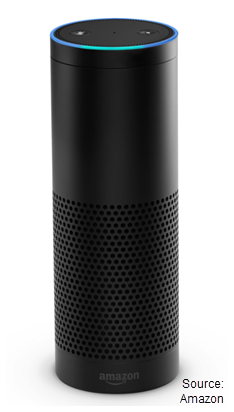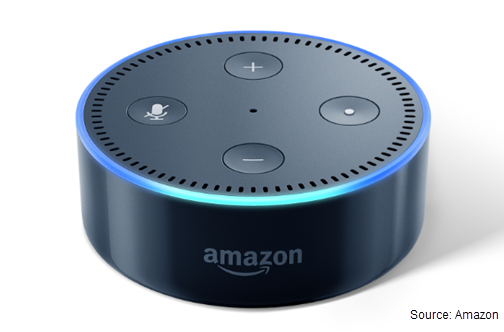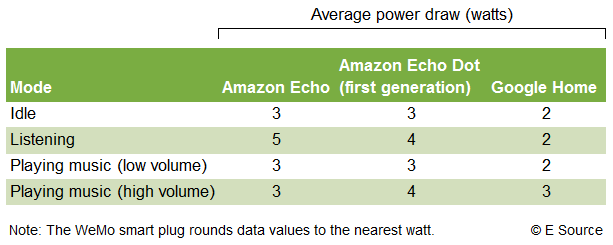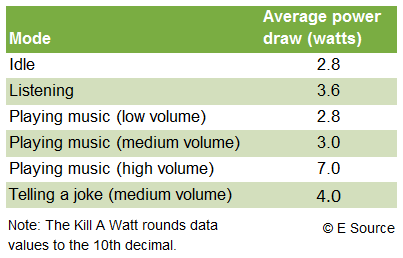Voice-controlled devices like Amazon Echo and Google Home are rapidly gaining market share and may prove to be a key interface for the smart home over the next year or two. These continually evolving Wi-Fi-enabled speakers with voice recognition can play music, answer questions, and control an expanding range of smart devices. But for energy nerds like me, there’s a persistent and nagging question: How much energy do these devices actually consume?
How much energy do Amazon Echo, Amazon Echo Dot, and Google Home use? Read the blog to find out!
Tweet this!
To answer this question, my gadget aficionado friend Doug and I recently measured the power draw of three of the top-selling voice-controlled devices (Figure 1), operating in different modes, using a WeMo smart plug.
FIGURE 1: Talk to me!
For each of the three devices, we looked at power draw in idle mode (plugged in but not active); listening mode (when a user says the trigger phrase—“Alexa” or “OK Google”—followed by a command); and music-playing mode at low and high volumes. The table below shows our results.
I separately used the Kill A Watt power-measurement device to collect more-precise data on the power draw of my own Amazon Echo. Rather than rounding to the nearest watt, as the WeMo plug does, the Kill A Watt provides measurements down to a 10th of a watt. In addition to the modes listed above, I also observed power draw when the device was playing music at a medium volume, as well as in a joke-telling mode when Alexa is talking directly to the user. And I changed the style of music from bluegrass to a more bass-heavy genre to see what impact it might have on energy use, if any. The table below shows the results.
Overall, the power drawn by the Echo in idle mode was fairly consistent across the WeMo and Kill A Watt measurements, but listening-mode power draw varied. This makes sense because a given command is likely to affect how much processing power the device needs to complete it. The power drawn by the Echo when playing music was fairly uniform at lower volume levels, but seemed to vary by music style at high volumes, possibly due to the changing levels of bass in different styles of music. At a given volume level, the Echo also required a little more power to talk to the user than it did to play music.
Looking at all of the measurements across multiple devices, one of the most interesting results is that power draw doesn’t vary much between idle and active modes for any of the devices we evaluated. The only real exception seems to be when the volume is cranked up to maximum levels and devices are playing bass-heavy music. With that in mind, if one were to assume an average power draw of 3 watts for the Amazon Echo, 3 watts for the Echo Dot (excluding the power drawn by any attached speakers), and 2 watts for the Google Home over the course of a given day, it’s possible to estimate an overall annual energy consumption of around 26 kilowatt-hours (kWh) for both Amazon Echo devices, and 18 kWh for the Google Home.
At an average national residential electricity price of 12.75 cents/kWh (per the US Energy Information Administration’s most recent estimates), that comes out to a cost of just $3.32 per year for the Amazon Echo devices and $2.30 for the Google Home. To me, that’s not too bad for a music-playing, joke-telling, smart home hub with a continually expanding skill set.




